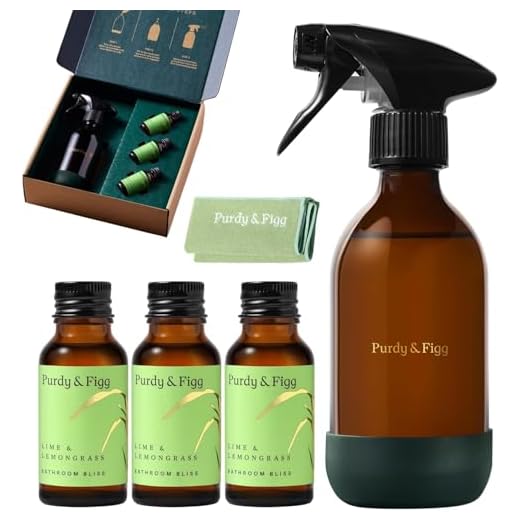




Limescale, also known as calcium carbonate, is a common problem that can accumulate on glass surfaces, leaving unsightly residue and making it difficult to keep your glass clean and clear. Whether it’s the shower doors in your bathroom or the windows in your home, limescale can be a stubborn nuisance to deal with. Fortunately, there are several tried and true methods for effectively removing limescale from glass, leaving it sparkling and crystal clear.
Vinegar: One of the most popular and effective methods for removing limescale from glass is using vinegar. Simply mix equal parts white vinegar and water in a spray bottle, then spray the solution onto the glass. Let it sit for a few minutes, then wipe it away with a cloth or sponge. The vinegar’s acidity helps dissolve the limescale, making it easier to remove.
Lemon Juice: Another natural and effective option for removing limescale is lemon juice. Squeeze fresh lemon juice onto the affected areas of the glass, then let it sit for a few minutes. Use a scrub brush or sponge to gently scrub the limescale away. The citric acid in the lemon juice helps break down and dissolve the calcium carbonate, leaving your glass spotless.
Baking Soda: Baking soda is a versatile household item that can also be used to remove limescale from glass. Make a paste by mixing baking soda with a small amount of water, then apply it to the limescale on the glass. Let it sit for a few minutes, then scrub the area with a brush or sponge. Rinse with water and wipe clean. The abrasive nature of baking soda helps lift the limescale while the alkaline properties help neutralize the acidic limescale.
By using these tried and true methods, you can easily remove limescale from glass and restore its natural clarity and shine. Say goodbye to stubborn limescale and hello to beautifully clean and clear glass surfaces throughout your home.
Tried and True Tips for Easily Removing Limescale from Glass
1. Vinegar
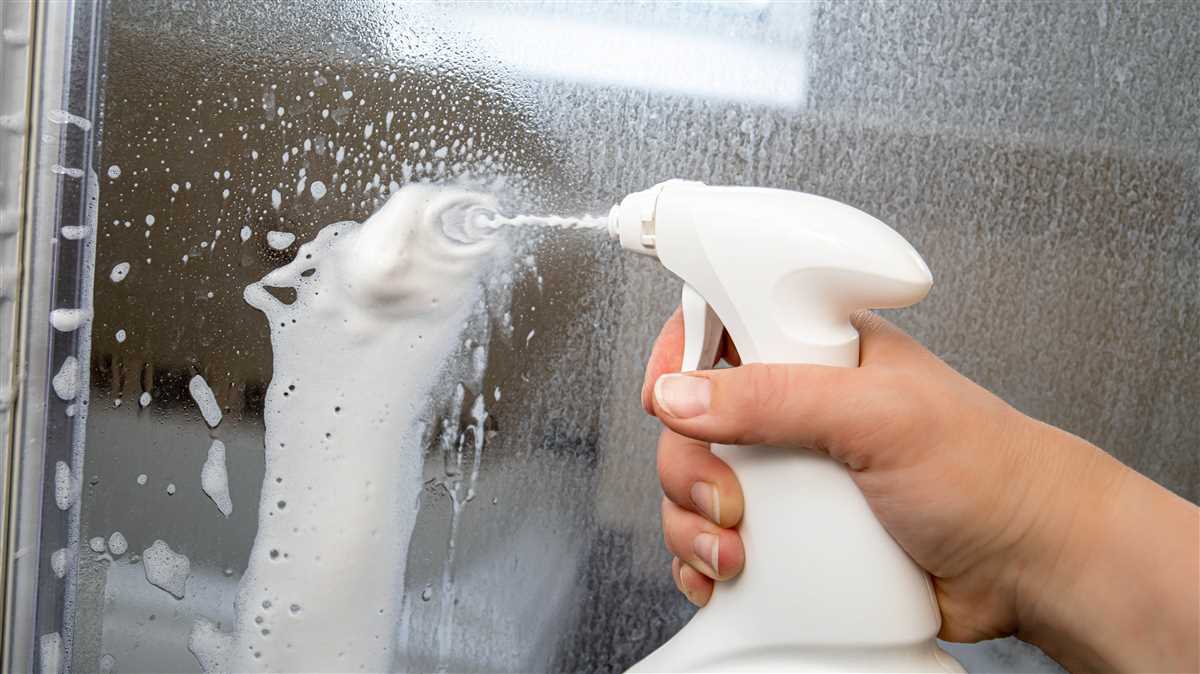
Vinegar is a natural and effective solution for removing limescale from glass surfaces. Simply mix equal parts white vinegar and water in a spray bottle. Spray the mixture onto the limescale and let it sit for a few minutes. Then, wipe the glass clean with a microfiber cloth or sponge. The acidity in the vinegar will help dissolve the limescale, making it easier to remove.
2. Lemon Juice
Lemon juice is another natural remedy that can be used to remove limescale from glass. Squeeze a fresh lemon and apply the juice directly onto the limescale. Allow it to sit for a few minutes, then scrub the glass with a non-abrasive sponge or cloth. The citric acid in the lemon juice will help break down the limescale, leaving your glass sparkling clean.
3. Baking Soda
Baking soda is a gentle abrasive that can be effective in removing limescale from glass. Create a paste by mixing baking soda with a small amount of water. Apply the paste to the limescale and let it sit for a few minutes. Then, scrub the glass with a soft cloth or sponge. Rinse the glass thoroughly with water to remove any residue. Baking soda can help loosen and scrub away limescale without scratching the glass surface.
4. Commercial Limescale Remover
If the limescale on your glass is particularly stubborn or difficult to remove, you can try using a commercial limescale remover. These products are specifically formulated to dissolve limescale and can be found at most supermarkets or hardware stores. Follow the instructions on the product label and use caution when handling chemicals.
5. Preventive Measures
To prevent limescale buildup on your glass surfaces in the future, consider taking preventive measures. Use a squeegee or a microfiber cloth to wipe down your glass after each use to remove any moisture. This will help prevent limescale from forming. Additionally, consider using a water softener or installing a water filter to reduce the amount of minerals in your water supply.
Conclusion
Limescale can be unsightly and difficult to remove from glass surfaces. However, with these tried and true tips, you can easily tackle limescale and keep your glass looking clean and clear. Whether you prefer natural remedies or commercial products, there are plenty of options available to help you effectively remove limescale from your glass.
Effective Methods for Limescale Removal
1. Vinegar
Vinegar is a highly effective natural cleaning agent that can help remove limescale from glass. Simply mix equal parts of white vinegar and water in a spray bottle. Spray the solution onto the limescale affected areas and leave it for a few minutes. Scrub the glass with a soft cloth or sponge and rinse with clean water. Repeat if necessary.
2. Lemon Juice
Lemon juice contains citric acid which helps dissolve limescale. Squeeze fresh lemon juice onto the limescale and let it sit for a few minutes. Use a sponge or brush to scrub the glass, then rinse with water to remove any residue.
3. Baking Soda
Mix baking soda with a small amount of water to form a paste. Apply the paste onto the limescale and let it sit for around 10 minutes. Scrub the area with a brush or sponge, then rinse with water. Baking soda can also be used in combination with vinegar or lemon juice for enhanced limescale removal.
4. Commercial Limescale Removers
There are various commercial limescale removers available in the market specifically designed for glass surfaces. Follow the instructions on the product label for the best results. Be sure to wear gloves and work in a well-ventilated area when using these products.
5. Steam Cleaning
A steam cleaner can effectively remove limescale from glass surfaces. Simply fill the steam cleaner with water and direct the nozzle towards the limescale. Move the steam cleaner slowly across the affected area to loosen and remove the limescale. Use a cloth or sponge to wipe away any residue.
6. Preventive Measures
Regular cleaning and maintenance can help prevent limescale buildup on glass surfaces. Wipe down glass surfaces regularly with a mixture of vinegar and water to inhibit limescale formation. Additionally, using a water softener or installing a water filtration system can help reduce the mineral content in the water and minimize limescale deposits.
| Method | Effectiveness | Ease of Use | Cost |
|---|---|---|---|
| Vinegar | High | Easy | Low |
| Lemon Juice | Medium | Easy | Low |
| Baking Soda | Medium | Easy | Low |
| Commercial Limescale Removers | High | Easy | Medium |
| Steam Cleaning | High | Moderate | Medium |
Choose a limescale removal method based on the severity of the limescale, convenience, and budget. Remember to test any cleaning solution on a small, inconspicuous area first to ensure it does not damage the glass surface.
Natural Cleaning Solutions for Limescale Build-Up
1. Vinegar
One of the most effective natural solutions for removing limescale from glass is vinegar. Its acidic properties help dissolve the mineral deposits and make them easy to wipe away.
To use vinegar for limescale removal:
- Mix equal parts of white vinegar and water in a spray bottle.
- Spray the solution onto the glass surface with limescale build-up.
- Let it sit for a few minutes to allow the vinegar to work its magic.
- Scrub the glass gently with a non-abrasive sponge or cloth.
- Rinse the glass thoroughly with water.
2. Lemon Juice
Lemon juice is another natural cleaning solution that can effectively remove limescale from glass. Its citric acid content helps break down the mineral deposits.
To use lemon juice for limescale removal:
- Squeeze the juice of a fresh lemon into a bowl.
- Dip a cloth or sponge into the lemon juice.
- Apply the lemon juice directly onto the glass surface with limescale.
- Let it sit for a few minutes.
- Scrub the glass gently with the cloth or sponge.
- Rinse the glass with water to remove any residue.
3. Baking Soda
Baking soda is a natural abrasive that can help scrub away limescale from glass surfaces. Its fine particles help remove the deposits without scratching or damaging the glass.
To use baking soda for limescale removal:
- Mix baking soda with a small amount of water to create a paste.
- Apply the paste onto the glass surface with limescale.
- Gently scrub the glass in circular motions using a soft cloth or sponge.
- Rinse the glass thoroughly with water.
4. Salt
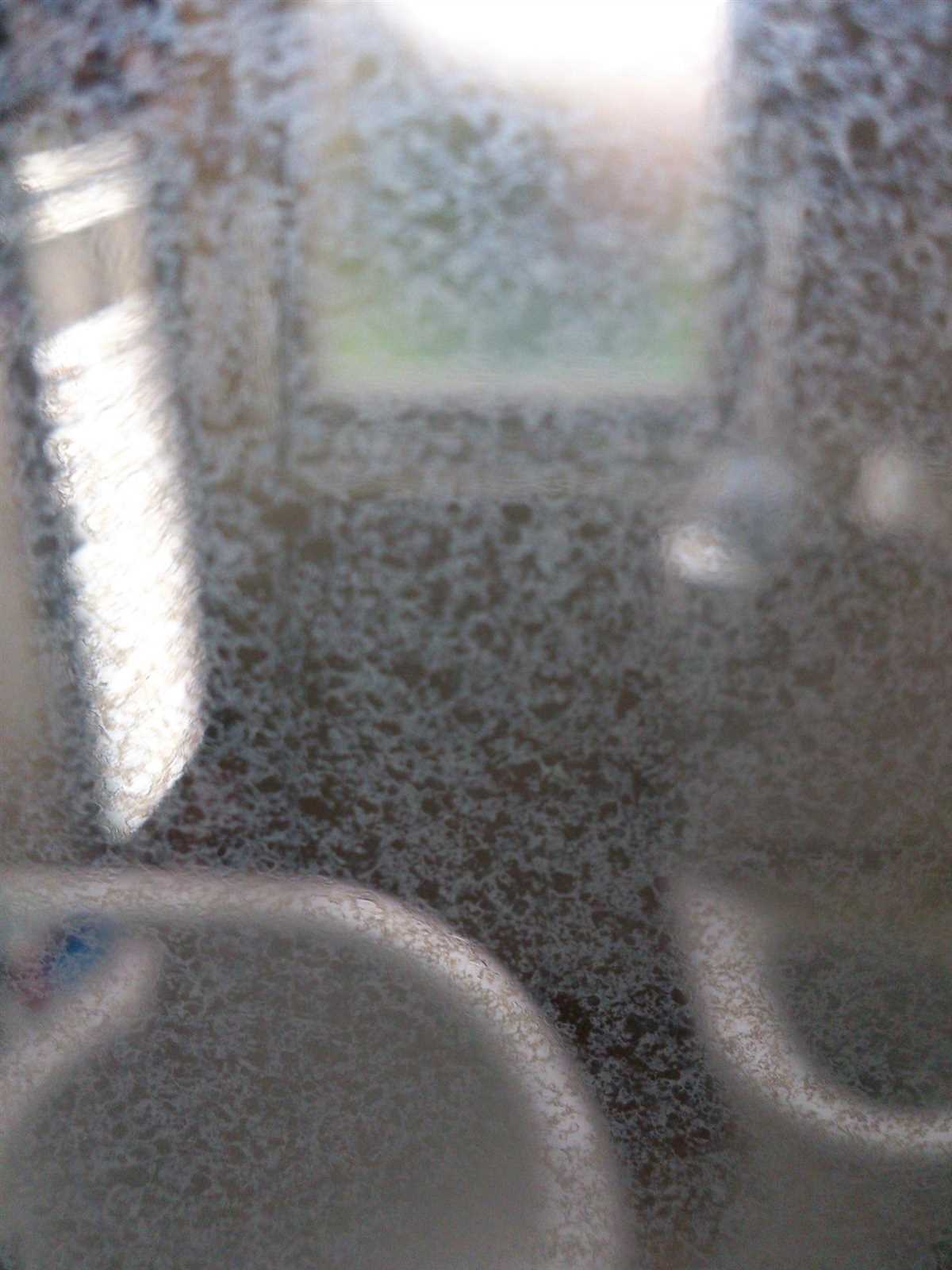
Salt is another natural abrasive that can be used to remove limescale from glass. It can help scrub away the deposits while being gentle on the glass surface.
To use salt for limescale removal:
- Dampen the glass surface with water.
- Sprinkle salt onto the limescale build-up.
- Gently scrub the glass using a cloth or sponge.
- Rinse the glass with water to remove any residue.
5. Commercial Lime and Scale Removers
If natural solutions do not provide satisfactory results, there are commercial lime and scale removers available in the market. These products are specifically formulated to dissolve limescale and can be used according to the instructions provided.
It is important to follow the manufacturer’s instructions and safety precautions when using commercial cleaning products.
| Solution | Method |
|---|---|
| Vinegar | Spray and scrub |
| Lemon Juice | Apply and scrub |
| Baking Soda | Create a paste and scrub |
| Salt | Sprinkle and scrub |
| Commercial Lime and Scale Removers | Follow instructions |
Preventing Limescale Build-Up on Glass Surfaces
1. Clean Regularly
To prevent limescale build-up on glass surfaces, it is important to clean them regularly. This will help to remove any existing limescale and prevent it from accumulating over time. Use a mild cleaning solution or a mixture of vinegar and water to clean the glass surfaces.
2. Use a Squeegee
After showering or using the glass surfaces, use a squeegee to remove excess water. This will help to prevent water spots and limescale formation on the glass. Make sure to wipe the glass dry after using the squeegee.
3. Avoid Harsh Cleaners
When cleaning glass surfaces, avoid using harsh cleaners that contain chemicals such as bleach or ammonia. These cleaners can damage the glass and may increase the risk of limescale build-up. Stick to mild cleaning solutions or natural alternatives like vinegar and water.
4. Use a Water Softener
If your water supply is known to have high mineral content, consider installing a water softener. A water softener can help to reduce the mineral deposits in the water, including calcium and magnesium, which are the main culprits for limescale formation. This can significantly reduce the chances of limescale build-up on glass surfaces.
5. Dry Glass Surfaces Thoroughly
After cleaning or using the glass surfaces, make sure to dry them thoroughly. Leaving the glass wet can promote limescale formation. Use a soft cloth or paper towel to dry the glass surfaces completely.
6. Avoid Hot Water
When cleaning glass surfaces, avoid using hot water as it can promote limescale formation. Opt for warm or room temperature water instead. Hot water can cause minerals in the water to dissolve and deposit on the glass surfaces.
7. Ventilate Your Bathroom
Poor ventilation in the bathroom can contribute to limescale formation on glass surfaces. Make sure your bathroom is well-ventilated by opening windows or using an exhaust fan. This will help to reduce moisture levels in the bathroom and prevent limescale build-up.
8. Consider Protective Coatings
If limescale build-up on your glass surfaces is a persistent problem, consider applying a protective coating. There are various products available in the market that can create a barrier on the glass surfaces, making it easier to prevent limescale formation and maintain the cleanliness of the glass.
| Tip | Description |
|---|---|
| Clean Regularly | Regular cleaning helps to remove existing limescale and prevent accumulation. |
| Use a Squeegee | Remove excess water from glass surfaces to prevent water spots and limescale formation. |
| Avoid Harsh Cleaners | Harsh cleaners can damage the glass and increase the risk of limescale build-up. |
| Use a Water Softener | Install a water softener to reduce mineral deposits in the water. |
| Dry Glass Surfaces Thoroughly | Ensure glass surfaces are completely dry after cleaning or use. |
| Avoid Hot Water | Hot water can promote limescale formation on glass surfaces. |
| Ventilate Your Bathroom | Proper ventilation reduces moisture levels and prevents limescale build-up. |
| Consider Protective Coatings | Apply a protective coating to make it easier to maintain the cleanliness of the glass. |
Expert Advice for Tough Limescale Stains
If you are dealing with tough limescale stains on glass surfaces, don’t worry! We have some expert advice that can help you remove them easily. Follow these tips and say goodbye to stubborn limescale.
1. Vinegar Solution
Vinegar is a natural and effective solution for removing limescale. Mix equal parts of white vinegar and water in a spray bottle. Spray the solution on the limescale stains and let it sit for a few minutes. Then, scrub the stains with a soft cloth or sponge. Rinse the glass thoroughly with water to remove any residue. Repeat the process if necessary.
2. Lemon Juice and Baking Soda
Combine lemon juice and baking soda to create a powerful limescale remover. Make a paste by mixing lemon juice and baking soda until it forms a thick consistency. Apply the paste to the limescale stains and let it sit for about 15 minutes. Then, scrub the stains gently with a soft brush or sponge. Rinse the glass with water to remove any residue.
3. Commercial Limescale Removers
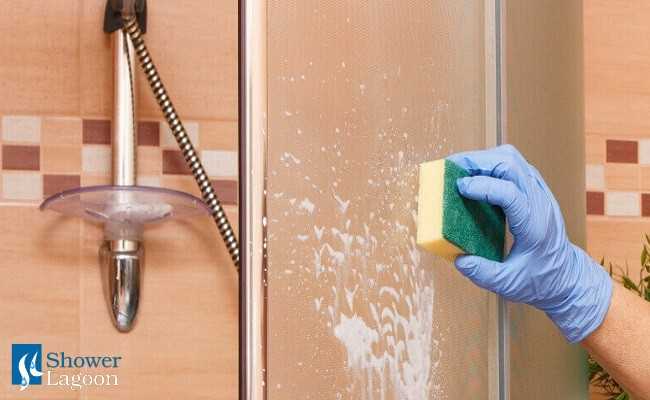
If DIY solutions don’t work, you can try using commercial limescale removers. Look for products specifically designed for glass surfaces and follow the instructions on the packaging. Remember to wear gloves and work in a well-ventilated area when using these products.
4. Preventing Limescale Buildup
Prevention is key to avoiding tough limescale stains. After cleaning the glass, wipe it dry to prevent water spots and limescale buildup. Additionally, try to remove any standing water from the glass surfaces to minimize limescale formation. Regular maintenance and cleaning will help keep your glass limescale-free.
5. Professional Cleaning Services
If all else fails or if you have a large area covered in limescale, consider hiring professional cleaning services. They have the knowledge, experience, and specialized equipment to remove tough limescale stains effectively and efficiently.
Remember to always test any cleaning solution on a small, inconspicuous area before applying it to the entire glass surface. This will help ensure that the solution does not cause any damage or discoloration.
By following these expert tips, you can easily remove tough limescale stains from glass surfaces and restore their shine and clarity. Say goodbye to unsightly limescale and enjoy sparkling clean glass!
Best Practices for Maintaining Limescale-Free Glass
1. Regular Cleaning
One of the most important practices for maintaining limescale-free glass is regular cleaning. Make it a habit to clean your glass surfaces at least once a week to prevent the buildup of limescale. Use a mild household cleaner or a mixture of vinegar and water to remove any existing limescale.
2. Use a Squeegee
After showering or using any glass surface, use a squeegee to remove excess water droplets. This will help prevent the formation of limescale by drying the surface quickly and effectively.
3. Avoid Harsh Chemicals
Avoid using harsh chemicals or abrasive cleaners on your glass surfaces, as they can damage the glass and promote limescale buildup. Instead, opt for mild, non-abrasive cleaners or natural alternatives like vinegar or lemon juice.
4. Wipe Dry
Always make sure to wipe your glass surfaces dry after cleaning or using water. Leaving them wet can encourage limescale to form, especially in areas with hard water.
5. Maintain Ventilation
Proper ventilation can help control humidity levels, reducing the chances of limescale formation. Ensure that your bathroom or any area with glass surfaces has good ventilation, such as an extractor fan or an open window.
6. Consider Water Softeners
If your area has hard water, installing a water softener can help prevent limescale buildup not only on your glass surfaces but also on your plumbing fixtures. Water softeners remove minerals that cause limescale, leaving your glass surfaces cleaner and more limescale-resistant.
7. Protect the Glass
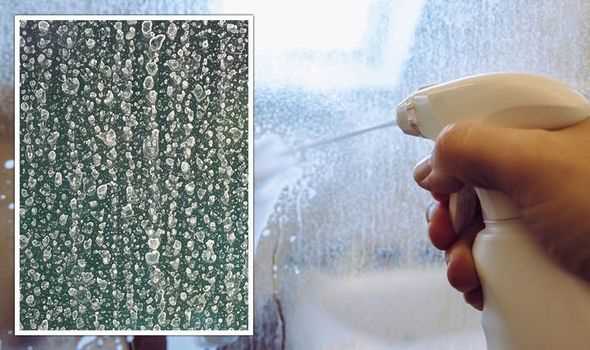
Avoid placing acidic or limescale-causing substances directly on your glass surfaces. Use coasters or mats to protect the glass from any potential damage from substances like lime juice or vinegar.
8. Address Limescale Immediately
If you notice any limescale buildup on your glass surfaces, address it immediately. Prompt action can prevent further buildup and make the removal process easier. Use a suitable limescale remover or vinegar solution to dissolve and remove the limescale.
9. Routine Maintenance
In addition to regular cleaning, incorporate routine maintenance into your cleaning schedule. This can include deep cleaning sessions or using limescale prevention products periodically to keep your glass surfaces limescale-free.
| Product | Benefits |
|---|---|
| Mild household cleaner | Gentle on glass, effective in removing limescale |
| Vinegar and water solution | Natural, non-toxic option for limescale removal |
| Limescale remover | Specifically formulated to dissolve and remove limescale |
By following these best practices and incorporating them into your cleaning routine, you can maintain limescale-free glass surfaces and ensure a sparkling clean appearance.
FAQ
Why is limescale so difficult to remove from glass?
Limescale is difficult to remove from glass because it forms a hard, crusty layer that can be stubborn to scrub away. It is primarily composed of calcium and magnesium carbonates, which have a strong bond with glass surfaces.
What are some natural remedies for removing limescale from glass?
There are several natural remedies you can use to remove limescale from glass. One effective method is to mix equal parts white vinegar and water, spray it onto the limescale, and let it sit for a few minutes before wiping it away. Another option is to create a paste using baking soda and water, apply it to the limescale, and scrub it off with a cloth or sponge.
Can I use commercial limescale removers on glass?
Yes, you can use commercial limescale removers on glass, but you should check the product label to ensure it is safe for glass surfaces. Some limescale removers contain harsh chemicals that may damage or etch the glass if not properly used.
How often should I clean limescale from glass?
The frequency at which you should clean limescale from glass depends on the severity of the buildup and your personal preference. However, it is generally recommended to clean limescale regularly to prevent it from becoming too difficult to remove.
Are there any preventative measures I can take to reduce limescale buildup on glass?
Yes, there are a few preventative measures you can take to reduce limescale buildup on glass surfaces. Using a water softener or installing a water conditioner can help reduce the minerals that cause limescale. Additionally, drying your glass surfaces after use can help prevent limescale from forming.
What should I do if the limescale is still difficult to remove?
If the limescale is still difficult to remove, you can try using a stronger solution such as a descaler specifically designed for limescale removal. You may also consider using a scraping tool or contacting a professional glass cleaner for assistance.


